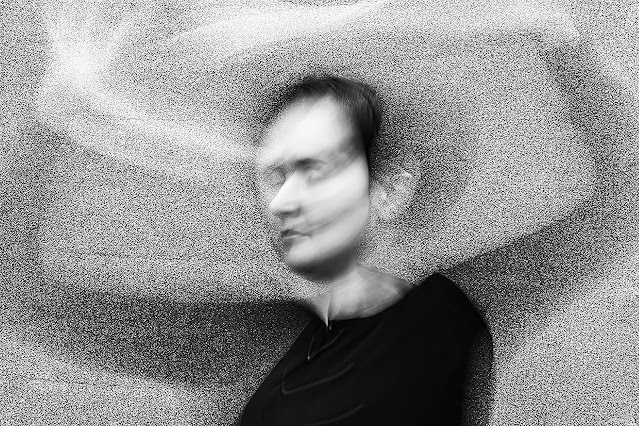The effect of new beauty rituals on the future of human communication
Medical
technology will bring us more ways to perfect our appearance. Over the past decades,
the use of Botox has increased enormously.
What started as a drug against muscle spasms and strabismus is now a
widespread way of preventing and treating wrinkles in the face, and is becoming
part of the beauty ritual of more and more women in the Western world.
In my medical
cosmetic practice in the Netherlands I see (mostly) women who come to me for
advice. They want to look good for their age, or want to get rid of a tired
look. But almost all of them say very explicitly ‘please make sure I will stay
looking like me’, or 'I don't want to look overtreated and unnatural'.
But what exactly
are they referring to? We all have a feeling and an idea what this is about.
But to precisely describe what makes a look unnatural, is quite difficult. That
is why I decided to research and visualize this phenomenon during my master
studies in Design. I called this project
‘Project Face Design’.
With this project
I wanted to show how the use of Botox in the face can affect our natural appearance.
Botox relaxes muscles in the face, smoothening wrinkles in the overlying skin. But because of the effect on the muscles, our
facial expressions are also changing. After all, you need muscle action to
create facial expressions. Using too much Botox may inadvertently affect our
non-verbal communication.
To visualize this
effect I used emotion recognition software (Facereader®). This
new technology measures movement in the face and knows which particular emotion
is asscociated with which particular movement. The system I have used is based
on FACS, a scientific system of emotion classification based on facial expressions.
An example of an analysis by this software where you can see how the tightening
of the glabellar muscle (used in frowning) is interpreted as anger:
Let's get back to
my clients' requests not to make them look unnatural. We all see examples in
the media of (mostly) women who obviously had some ‘work’ done to meet the
ideal of beauty. Besides that we often intuitively feel that these ladies don't
look like all that natural, there's also something going on with their non-verbal
communication after their excessive Botox use. To illustrate this, we can have
a look at the Orange County Wives. I strongly suspect that all of them use
Botox, dermal fillers and other cosmetic treatments, to a more or lesser
extent. The ladies fight a lot and have a lot of misunderstandings. Could it be
that the amount of Botox they use plays a role in this?
Let's take a look
with some help from the software. As we
saw before, frowning is associated with anger. The red bar of the software then
runs up. Watch the red (anger) bar in the video below.
The lady in the
mint green dress is clearly very angry, but when you look at her facial
expression, it is does not match her emotion. Take a look at the red bar which
corresponds with anger. This bar hardly moves!
What will our
future look like knowing that the ideal of beauty, youthfulness and perfection has
so much influence on us? That we apparently choose 'en masse' to take
far-reaching measures to slow down the aging process? Are we willing to lose a
piece of what makes us human, namely our ability to use facial expressions in
our communication?
I myself use Botox
and therefore decided to submit myself to an investigation to measure the
effects of this use on my facial expressions with the software. I mapped out
what kind of facial expressions are typical for me when I don’t use Botox. I first
had to let the existing Botox wear out. This gave me my first insight: that it
was nice to be able to fully use my face again in non-verbal communication. I
also genuinely felt what I meant. This phenomenon is known as facial feedback.

Then, I decided to
undergo a full face botox. See the
result below, and click on link to see the full video on my website (https://www.projectfacedesign.com/artificial-intelligence-and-botox):

It is clear that
my face communicates differently after the Botox. I also felt very clearly that
I could no longer use my face properly in non-verbal communication. The bizarre
thing however, was that a few weeks later I had unwittingly adapted my
communication style to this. As if the will to ‘pull certain faces' also is extinguished,
if you don’t succeed while trying.
From this I
conclude that, while Botox is a very effective way to soften mimicry lines, Botox
also 'flattens' facial expressions when used excessively. So do ask your doctor
to take very good account of the effect on your personal mimicry.
Another conclusion
is of a more reflective nature. If we want to slow down ageing and look as
young as possible on the one side, but we also want to keep a natural look on
the other, we need to keep one thing in mind: It is only possible to age in a
beautiful way if you can accept some loss of youth. Ageing cannot be undone,
and getting wrinkles is a part of life.
For more
information: https://en.studiomarshawichers.nl/over-mij



Wonderful post! Thanks. For greater guidance on caring for your skin and hair, consult a qualified physician, click Pre-Bridal Skin Treatment in East Delhi
ReplyDeleteThis comment has been removed by the author.
ReplyDeleteThank You for this Information. kindly visit my site,IV Therapy Liver Detox in Dubai
ReplyDelete